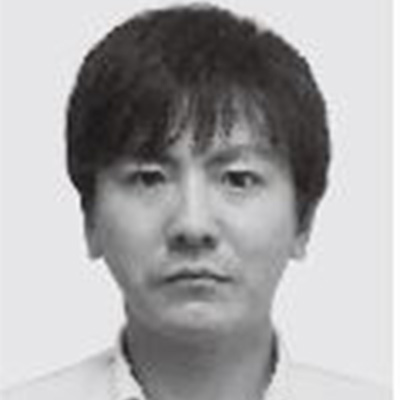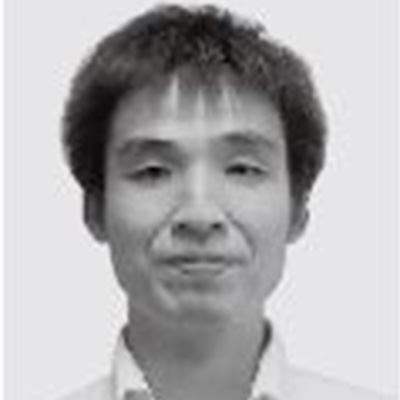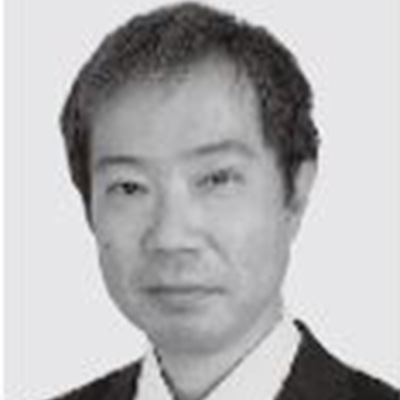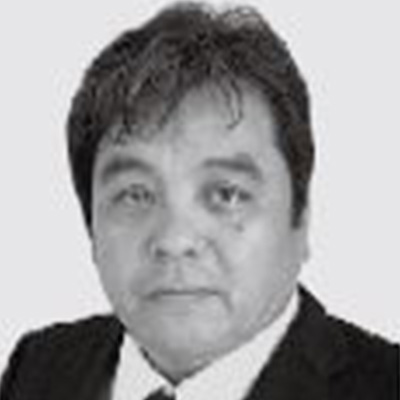Japan’s capital city of Tokyo forms one of the world’s largest metropolitan areas, and is continually expanding. It is said that over 30 million passengers a day use Tokyo’s rail transportation systems, and complicated routes, modes of service, and types of rolling stock have been created to transport them efficiently and safely. Such a large number of users makes passenger information services nearly as crucial as rail transportation itself, and with rail services expected to become more complex, these information services will only grow in importance. By taking maximum advantage of the technologies it has fostered over many years, Hitachi will continue to help improve services for rail passengers and staff in response to societal changes and transportation demands.

ATOS Central Division, Tokyo Electric Construction and System Integration Office, East Japan Railway Company. He is currently engaged in ATOS development.

ATOS Central Division, Tokyo Electric Construction and System Integration Office, East Japan Railway Company. He is currently engaged in ATOS development.

ATOS Central Division, Tokyo Electric Construction and System Integration Office, East Japan Railway Company. He is currently engaged in ATOS development.

Signaling Systems Design Department, Mito Rail Systems Product Division, Railway Systems Business Unit, Hitachi, Ltd. He is currently engaged in the development of passenger guidance systems.

Signaling Systems Design Department, Mito Rail Systems Product Division, Railway Systems Business Unit, Hitachi, Ltd. He is currently engaged in the development of passenger guidance systems.

Transport Management Systems and Solutions Department, Transportation Systems Division, Railway Systems Business Unit, Hitachi, Ltd. He is currently engaged in the management of railway traffic systems.
Fig. 1—Two Through-service Routes Between Omiya and Yokohama. Along with the Shonan-Shinjuku Line, the opening of the Ueno-Tokyo Line has now created a choice of two routes between Omiya and Yokohama.
Along with the Shonan-Shinjuku Line, the opening of the Ueno-Tokyo Line has now created a choice of two routes between Omiya and Yokohama.
THE recent diversification of transportation services into modes such as through-service and multiple-operator service to different line sections is creating a need for more detailed passenger information services.
The East Japan Railway Company (hereafter, JR East) has created a rail traffic control system for the Tokyo area, known as the Autonomous Decentralized Transport Operation Control System (ATOS), and Hitachi's passenger information controls are being used with ATOS to improve passenger services by showing the current statuses of rail services in realtime. Since the system began operating on the first line section in 1996, Hitachi has worked on various modes of operation, site equipment, and methods of providing information, expanding its lineup of system types to standard, high-speed, and high-speed types II and IV.
With the start of through-service on the Ueno-Tokyo Line and Shonan-Shinjuku Line, passengers can now choose between two transfer-free routes between Omiya and Yokohama (see Fig. 1). JR East and Hitachi recently developed a real-time first-arriving train information system for these routes that takes full advantage of Hitachi's many years of accumulated experience in passenger information controls.
This article presents the approach, functions, and future outlook of the new first-arriving train information system.
When developing the new system, the following points were given focus based on the current challenges and future outlook.
While a system was already installed in Omiya Station for displaying information on first-arriving trains at Shinjuku Station, it displayed information from the preplanned timetable data, so it was unable to automatically track timetable changes after a timetable disruption. Manual changes were required to turn off display information, which increased station staff workload and made it difficult to provide uninterrupted service to passengers.
The new system reads timetable information and in-zone train information from ATOS in realtime, enabling uninterrupted display of first-arriving train information adjusted for timetable changes and train delays when timetable disruptions occur.
TABLE 1. Relationships between Departure Station, Destination Station, and Route Displayed
The table shows the relationships between the departure station, the destination station, and the route displayed in the destination station arrival information by comparing multiple routes.

Conventional passenger information controls are located in the station equipment of autonomous distributed systems. They are designed to provide information on trains that are approaching and leaving a given station, so they contain timetable information for only that station.
But to display information on first-arriving train routes to passenger destination stations, the new first-arriving train information system needs the timetables for all of the stations on the travel routes of the Ueno-Tokyo Line and Shonan-Shinjuku Line. As an autonomous distributed system, ATOS is configured so that only the ATOS service server has the timetables for all sections of the Ueno-Tokyo Line and Shonan-Shinjuku Line. The new system has been designed to be able to display first-arriving train information for destination stations by reading timetable information and in-zone train information in realtime from the ATOS service server to compare the Ueno-Tokyo Line and Shonan-Shinjuku Line. Table 1 shows the relationships between the departure station, the destination station, and the route displayed by the system.
Fig. 2—Configuration of First-arriving Train Information System. The system consists of the first-arriving train information server and monitoring/input terminals (the central system), along with station controllers of station systems. The central system is connected to the station systems by JR East’s internal infrastructure lines.
The system consists of the first-arriving train information server and monitoring/input terminals (the central system), along with station controllers of station systems. The central system is connected to the station systems by JR East’s internal infrastructure lines.
Fig. 3—Photo of the First-arriving Train Information Server and Monitoring/Input Terminals. The photo shows the first-arriving train information server and monitoring/input terminals that make up the central system.
The photo shows the first-arriving train information server and monitoring/input terminals that make up the central system.
Fig. 2 shows the system configuration of the first-arriving train information system.
The system has been installed in three stations (departure stations): Omiya Station, Akabane Station, and Yokohama Station. At the Omiya and Akabane stations, it provides information on first-arriving trains bound for Yokohama Station (the destination station). At Yokohama Station, it provides information on first-arriving trains bound for Omiya Station (the destination station).
Hitachi's work on the system consisted of installing the new first-arriving train information server and monitoring/input terminals that make up the central system.
An overview of each item of equipment is given below (see Fig. 3).
The first-arriving train information server receives timetable information and in-zone train information from the ATOS service server. From the two types of information received, the system calculates the anticipated time of arrival at the destination station of each train on the Ueno-Tokyo Line route and the Shonan-Shinjuku Line route. The calculation result is used to identify the first two trains that will arrive at the destination station, and the result is then sent to the station controller.
The hardware has a dual system configuration, enabling uninterrupted information display when one system fails.
The monitoring/input terminals can display the system monitoring status, failure history, and first-arriving train information server timetable storage status. They can also restart and switch the first-arriving train information server, and can make the timing adjustments used to advance the first-arriving train display panels. They can also set whether to send or stop sending display information to the station controller.
The system determines the first-arriving and second-arriving trains to be displayed on the first-arriving train information display panels installed in the stations, and then creates the display information. The process flow for determining the first-arriving and second-arriving trains is as follows.
Create the train arrival sequence for the two Omiya-bound routes (northbound Ueno-Tokyo Line and northbound Shonan-Shinjuku Line) and two Yokohama-bound routes (southbound Ueno-Tokyo Line and southbound Shonan-Shinjuku Line).
From the route-specific sequence information, identify the first-arriving and second-arriving trains on each route, excluding out-of-service and through trains.
Calculate the anticipated time of arrival for each of the identified first-arriving and second-arriving trains, incorporating any delays.
Set the two trains with the earliest anticipated arrival times as the first-arriving and second-arriving trains.
Fig. 4—Arrival Locations Used to Determine Route-specific Sequences. The Omiya Station arrival sequence is determined using Hebikubo (signal station) and Tokyo as the arrival locations. The Yokohama Station arrival sequence is determined using Ikebukuro and Ueno as the arrival locations. This approach is used to account for the sequence of timetable change inputs by control center staff during timetable disruptions.
The Omiya Station arrival sequence is determined using Hebikubo (signal station) and Tokyo as the arrival locations. The Yokohama Station arrival sequence is determined using Ikebukuro and Ueno as the arrival locations. This approach is used to account for the sequence of timetable change inputs by control center staff during timetable disruptions.
The sequence of trains traveling on the same route can be uniquely identified from the timetable information. This means that the first-arriving trains at Omiya Station on the Shonan-Shinjuku Line northbound route can be identified from the Omiya Station arrival sequence. However, if train service becomes disrupted, the timetable changes input by control center staff will come in the order that the trains are traveling, so the change in the Omiya Station arrival sequence will come last.
So, when the train departs from Yokohama Station, the timetable change inputs by control center staff are not expected to have been completed up to the change in the Omiya Station arrival sequence.
To account for the sequence of timetable change inputs by control center staff during timetable disruptions, Omiya Station and Yokohama Station are not used as the arrival locations when creating route-specific sequence information. The arrival locations used instead are Hebikubo (signal station) for the northbound Shonan-Shinjuku Line, Tokyo for the northbound Ueno-Tokyo Line, Ikebukuro for the southbound Shonan-Shinjuku Line, and Ueno for the southbound Ueno-Tokyo Line (see Fig. 4).
The first two trains are identified from the created train information for each route, excluding arrived trains, out-of-service trains, through trains, and trains that are not going to the destination station.
Fig. 5—Calculation of the Anticipated Time of Arrival at Destination Station on the Shonan-Shinjuku Line. Omiya Station departure time + A + B + C+ D + t1 + t2 + t3 = Anticipated time of arrival at destination station (Yokohama Station).
Omiya Station departure time + A + B + C+ D + t1 + t2 + t3 = Anticipated time of arrival at destination station (Yokohama Station).
The anticipated time of arrival at a destination station is calculated by adding travel time to the destination station (given by the timetable), the amount of delay, and the time of departure from the departure station.
The formula for calculating the anticipated time of arrival at a destination station is shown below.
Anticipated time of arrival at destination station
= Time of departure from departure station + Total travel time between stations on way to destination station + Total stationary time on way to destination station + Delay time (delay at time of calculation)
To reduce processing time, the total amount of travel time between stations on the way to the destination station is not calculated for each station. Instead, the total is calculated by subtracting the starting point station time of departure from the endpoint station time of arrival for various trains traveling between junctions on the way from the departure station to the destination station (including cases such as system-routed trains, service changes, and travel route changes) (see Fig. 5).
The total amount of stationary time on the way to the destination station is also not calculated for each station. Instead, the amount of stationary time at junction stations along the way is totaled (see Fig. 5). If a timetable change results in an inversion of the arrival and departure times, the calculation uses a value of 1 minute for the amount of stationary time.
The delay time used in the calculation is the amount given in the in-zone train information received from the ATOS service server. So, even if a problem on a line section delays all of the trains, the delay time for any out-of-zone train will be 0, with a delay generated as soon as a train becomes an in-zone train.
Due to the nature of the in-zone train information, a case could arise in which the first-arriving train in the route-specific sequence information has a delay, but the second-arriving train is an out-of-zone train, which does not have a delay. If the delay of this first-arriving train exceeds the time difference up to the arrival of the second-arriving train, then calculating the first-arriving train's anticipated time of arrival at the destination station by simply adding in the delay will yield a result indicating that the second-arriving train will arrive first.
To avoid this problem, the following formula is used to calculate the second-arriving train's anticipated time of arrival at the destination station in cases when that arrival time would otherwise be the same or earlier than the first-arriving train's anticipated time of arrival on the same route.
Corrected anticipated time of arrival at destination station for second-arriving train in route-specific sequence
= Anticipated time of arrival at destination station for first-arriving train (on same route) + Additional service time
Once the anticipated times of arrival at the destination stations for the first-arriving and second-arriving trains on each route (four trains in total) have been calculated as described in the previous section, the results are used to identify the two earliest arriving trains. At the departure stations, these trains are set as the first-arriving and second-arriving trains at the destination stations.
The first-arriving train information system presented in this article was installed and brought online at Omiya Station, Yokohama Station, and Akabane Station on March 29, 2016. Hitachi will continue to apply the same technologies used in this system to other stations and line sections, while continuing to help provide services that better meet the needs of both rail passengers and staff.